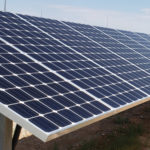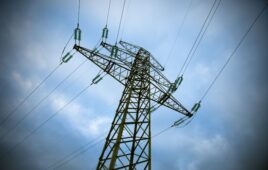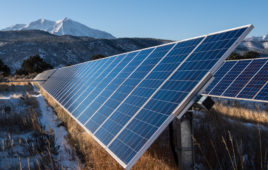The economics guiding U.S. investments in electricity generation have reached a historic tipping point: combinations of solar, wind, storage, efficiency and demand response are now less expensive than most proposed gas power plant projects. According to a new report by Rocky Mountain Institute (RMI), portfolios of these clean energy resources can provide the same energy and reliability services as traditional gas power plants — but cost less.
This new economic reality has profound implications for electricity consumers and industry investors. Currently, there is an estimated $90 billion of planned investment in new gas-fired power plants and over $30 billion of planned investment in proposed gas pipelines. If clean energy replaces the proposed gas plants, consumers could save $29 billion, according to the report, “The Growing Market for Clean Energy Portfolios.”
For investors, the report highlights the significant risk that proceeding with announced projects will result in stranded costs. By the mid 2030s, as clean energy prices continue to fall, building a new portfolio of clean energy resources will become less costly than continuing to pay the operating costs of a combined-cycle gas plant, and such a portfolio will provide the same level of energy, capacity and reliability services.
These cost trends could lead to the economic retirement of plants representing over 90% of currently proposed new combined-cycle gas capacity by 2035, resulting in a significant risk of investment capital becoming stranded. Just as coal plants have retired due to competition from low-priced natural gas in the past 10 years, the ongoing cost declines in wind, solar and battery technologies threaten to do the same to natural gas plants by the mid-2030s, according to the report. The report notes examples from Colorado, Michigan, Indiana, California and other states across the country where this trend is already on display and causing industry leaders to prioritize investment in clean energy instead of new gas infrastructure.
A companion study by RMI examines the implications of this dynamic on the economics of new gas pipelines. This report, “Prospects for Gas Pipelines in the Era of Clean Energy,” shows that power plant gas use has driven the overall increase in U.S. natural gas consumption over the past 20 years — expectations that this growth will continue underpin the economics of proposed new pipelines.
But because clean energy already outcompetes gas power plants and will soon lead to their early retirement, the underlying economic justification for new pipelines is now in question. The report finds that over 95% of gas use in proposed gas-fired power plants across much of the eastern United States could be economically offset by clean energy by 2035, reducing the utilization of proposed new gas pipelines by between 20% and 60%.
This reduction in gas flowing through new pipelines would, in turn, dramatically increase the costs that customers or shareholders will face in continuing to operate these pipelines. The report identifies the risk of a “death spiral,” where declining sales volume leads to higher prices, which in turn lead to further declines in sales. This reinforcing feedback loop would only end when pipeline projects go bankrupt and/or cease operations altogether.
The RMI reports highlight the fact that replacing proposed gas plants with clean energy is an opportunity to avoid 100 million tons per year of CO2 emissions, equivalent to 5% of total annual US electricity-sector emissions. While representing a small fraction of total grid emissions today, these avoided emissions are equivalent to over 20% of the US grid’s emissions budget under 80% emissions-reduction scenarios. Thus, by cost-effectively replacing new gas with clean energy today, the country can make meaningful progress on long-term decarbonization efforts.
“The economics driving clean energy deployment are strengthening at a speed that has transformed what was a relatively abstract thought exercise only years ago to a present-day reality. This new reality requires careful analysis by policymakers and system operators who are planning for an increasingly low-carbon grid,” said Mark Dyson, a principal at RMI and the lead author of both reports. “The inflection point we identify in this study signals a historic opportunity for the energy industry to capture the valuable benefits clean energy provides, while greatly improving environmental performance and protecting customers from the risks of stranded investments.”
The reports conclude with implications and recommendations for investors, regulators and planners, suggesting ways to capture the opportunities at hand and avoid the risks of uneconomic gas investments. In particular, the reports recommend that regulators and utilities carefully assess their systems’ needs and use open, technology-neutral planning processes to guide investment in the most economic solutions.
News item from the Rocky Mountain Institute








“But because clean energy already outcompetes gas power plants and will soon lead to their early retirement, the underlying economic justification for new pipelines is now in question. The report finds that over 95% of gas use in proposed gas-fired power plants across much of the eastern United States could be economically offset by clean energy by 2035, reducing the utilization of proposed new gas pipelines by between 20% and 60%.”
There is a movement well into a “mature” manufacturing path that may well destroy all natural gas fired plants, old nuclear plants and coal fired plants. It has been announced that the redox flow battery company UET Inc. has partnered with a Chinese company Rongje Energy which has built what one could call a Giga-factory for vanadium redox flow batteries. It is designed to crank out GW of energy storage a year. At the price point of keeping a manufacturing facility running 24/7 will create the economies of scale to bring down redox flow battery storage for utility’s below the $/kWh of any fueled generation plant. UET Inc. seems to think it can reach the $50/kWh when GW of energy storage is adopted and installed.
““The inflection point we identify in this study signals a historic opportunity for the energy industry to capture the valuable benefits clean energy provides, while greatly improving environmental performance and protecting customers from the risks of stranded investments.””
I see what he is saying, and can’t help doubt that energy storage and non-fueled generation will change the amortization of new generation plants at the “cost” of “stranded assets” constructed only a decade or so ago and causing these assets to be ‘curtailed’ when more and more solar PV, wind, hydro, geothermal with distributed energy storage is constructed along the grid. IF JPL, MIT, DOE, White Sands, or the DOE hasn’t broken out the super computers and modeled the roughly 8 grids in the United States, to see just how one can and ‘should’ keep old fueled infrastructure online while decommissioning the rest is a very large min/max program to take on.